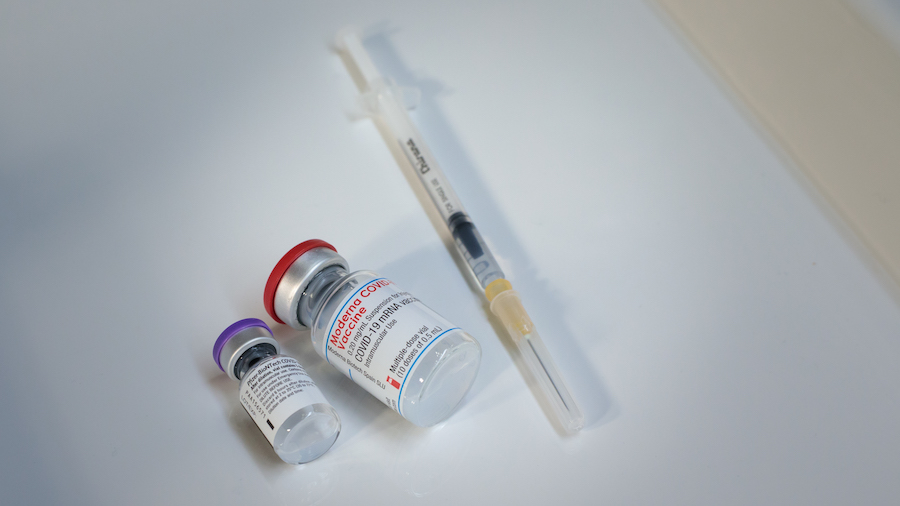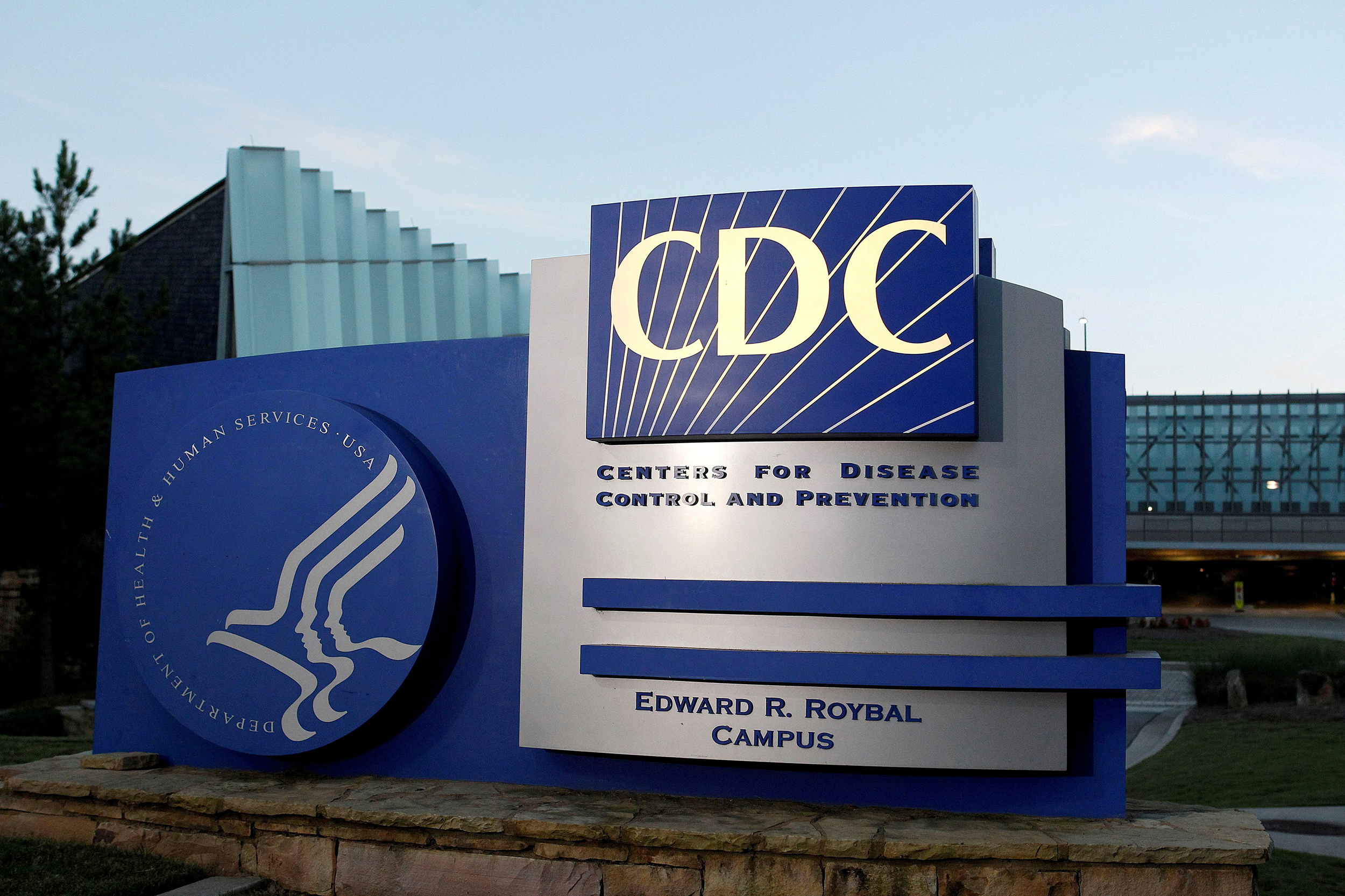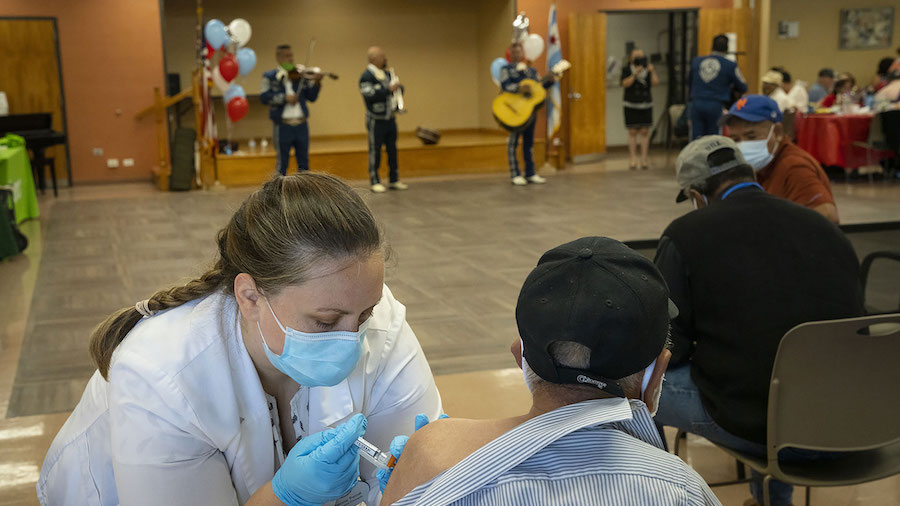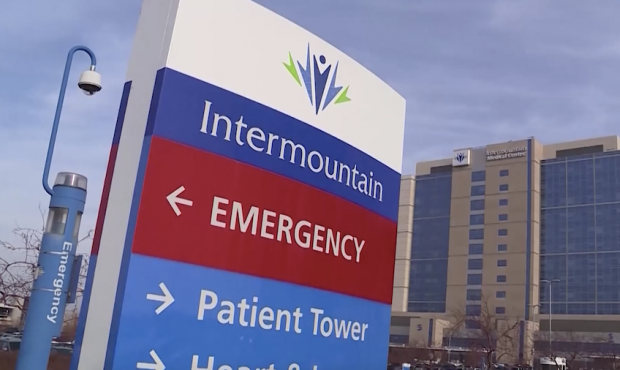CORONAVIRUS
India Grieves 200,000 Dead With Many More Probably Uncounted
Apr 28, 2021, 7:45 AM
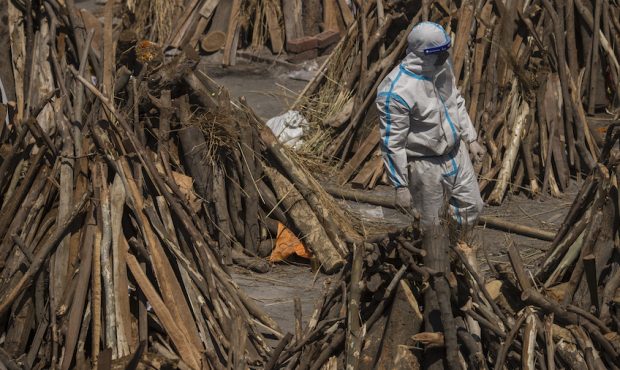
A man wearing PPE kit (Personal Protection Equipment) can be seen amid funeral pyres before they were lit to perform the last rites of the patients who died of the Coronavirus disease at a crematorium on April 24, 2021 in New Delhi, India. With recorded cases crossing 300,000 a day, India has more than 2 million active cases of Covid-19, the second-highest number in the world after the U.S. A new wave of the pandemic has totally overwhelmed the country's healthcare services and has caused crematoriums to operate day and night as the number of victims continues to spiral out of control. (Photo by Anindito Mukherjee/Getty Images)
(Photo by Anindito Mukherjee/Getty Images)
NEW DELHI (AP) — Three days after his coronavirus symptoms appeared, Rajendra Karan struggled to breathe. Instead of waiting for an ambulance, his son drove him to a government hospital in Lucknow, the capital of India’s largest state.
But the hospital wouldn’t let him in without a registration slip from the district’s chief medical officer. By the time the son got it, his father had died in the car, just outside the hospital doors.
“My father would have been alive today if the hospital had just admitted him instead of waiting for a piece of paper,” Rohitas Karan said.
Stories of deaths tangled in bureaucracy and breakdowns have become dismally common in India, where deaths on Wednesday officially surged past 200,000. But the true death toll is believed to be far higher.
In India, mortality data was poor even before the pandemic, with most people dying at home and their deaths often going unregistered. The practice is particularly prevalent in rural areas, where the virus is now spreading fast.
This is partly why this nation of nearly 1.4 billion has recorded fewer deaths than Brazil and Mexico, which have smaller populations and fewer confirmed COVID-19 cases.
While determining exact numbers in a pandemic is difficult, experts say an overreliance on official data that didn’t reflect the true extent of infections contributed to authorities being blindsided by a huge surge in recent weeks.
“People who could have been saved are dying now,” said Gautam Menon, a professor of physics and biology at Ashoka University. Menon said there has been “serious undercounting” of deaths in many states.
India had thought the worst was over when cases ebbed in September. But infections began increasing in February, and on Wednesday, 362,757 new confirmed cases, a global record, pushed the country’s total past 17.9 million, second only to the U.S.
Local media have reported discrepancies between official state tallies of the dead and actual numbers of bodies in crematoriums and burial grounds. Many crematoriums have spilled over into parking lots and other empty spaces as blazing funeral pyres light up the night sky.
India’s daily deaths, which have nearly tripled in the past three weeks, also reflect a shattered and underfunded health care system. Hospitals are scrambling for more oxygen, beds, ventilators and ambulances, while families marshal their own resources in the absence of a functioning system.
Jitender Singh Shunty runs an ambulance service in New Delhi transporting COVID-19 victims’ bodies to a temporary crematorium in a parking lot. He said those who die at home are generally unaccounted for in state tallies, while the number of bodies has increased from 10 to nearly 50 daily.
“When I go home, my clothes smell of burnt flesh. I have never seen so many dead bodies in my life,” Shunty said.
Burial grounds are also filling up fast. The capital’s largest Muslim graveyard is running out of space, said Mohammad Shameem, the head gravedigger, noting he was now burying nearly 40 bodies a day.
In southern Telangana state too, doctors and activists are contesting the official death counts.
On April 23, the state said 33 people had died of COVID-19. But between 80 to 100 people died in just two hospitals in the state’s capital, Hyderabad, the day before. It is unclear whether all were due to the virus, but experts say COVID-19 deaths across India aren’t being listed as such.
Instead, many are attributed to underlying conditions despite national guidelines asking states to record all suspected COVID-19 deaths, even if the patient wasn’t tested for the virus.
For instance, New Delhi officially recorded 4,000 COVID-19 deaths by Aug. 31, but this didn’t include suspected deaths, according to data accessed by The Associated Press under a right-to-information request. Fatalities have since more than tripled to over 14,500. Officials didn’t respond to queries on whether suspected deaths are now being included.
In Lucknow, officials said 39 people died of the virus in the city on Tuesday. But Suresh Chandra, who operates its Bhaisakhund electric crematorium, said his team had cremated 58 COVID-19 bodies by Tuesday evening, and 28 more were cremated at a nearby crematorium the same day.
Ajay Dwivedi, a government official in Lucknow, acknowledged more bodies were being cremated but said they included corpses from other districts.
Last year, the Indian government used low death and case counts to declare victory against the coronavirus. In October, a month after cases started to ebb, Prime Minister Narendra Modi said India was saving more lives than richer countries. In January he boasted at the World Economic Forum that India’s success was incomparable.
At the heart of these statements was dubious data that shaped policy decisions.
Information about where people were getting infected and dying could have helped India better prepare for the current surge, said Dr. Prabhat Jha, an epidemiologist at the University of Toronto who has studied deaths in India.
Accurate data would have allowed experts to map the virus more clearly, identifying hotspots, driving vaccinations and strengthening public health resources, he said.
“You can’t walk out of a pandemic without data,” he said.
But even when reliable data is available, it hasn’t always been heeded. With infections already rising in March, Health Minister Harsh Vardhan declared India was nearing the “endgame.” When daily cases were in the hundreds of thousands, Modi’s Bharatiya Janata Party and other political parties were holding massive election rallies, drawing thousands of maskless supporters.
The government also allowed a Hindu festival drawing hundreds of thousands to the banks of the Ganges River to go ahead despite warnings from experts that a devastating surge was starting.
Many were already convinced COVID-19 wasn’t very lethal since the death toll seemed low.
India’s health ministry did not respond to queries from AP, and ministers from Modi’s party deflected questions about death counts.
Manohar Lal Khattar, chief minister of Haryana state, told reporters Monday that the dead will never come back and that “there was no point in a debate over the number of deaths.”
The Indian Medical Association in February said 734 doctors had died of COVID-19 since the pandemic began. Days later, India’s health ministry put the number at 313.
“This is criminal,” said Dr. Harjit Singh Bhatti, president of the Progressive Medicos and Scientists Forum. “The government lied about the deaths of health workers first, and now they are lying about deaths of ordinary citizens.”
___
Associated Press writers Biswajeet Banerjee in Lucknow, Omer Farooq in Hyderabad and Chonchui Ngashangva in New Delhi contributed to this report.
___
The Associated Press Health and Science Department receives support from the Howard Hughes Medical Institute’s Department of Science Education. The AP is solely responsible for all content.

